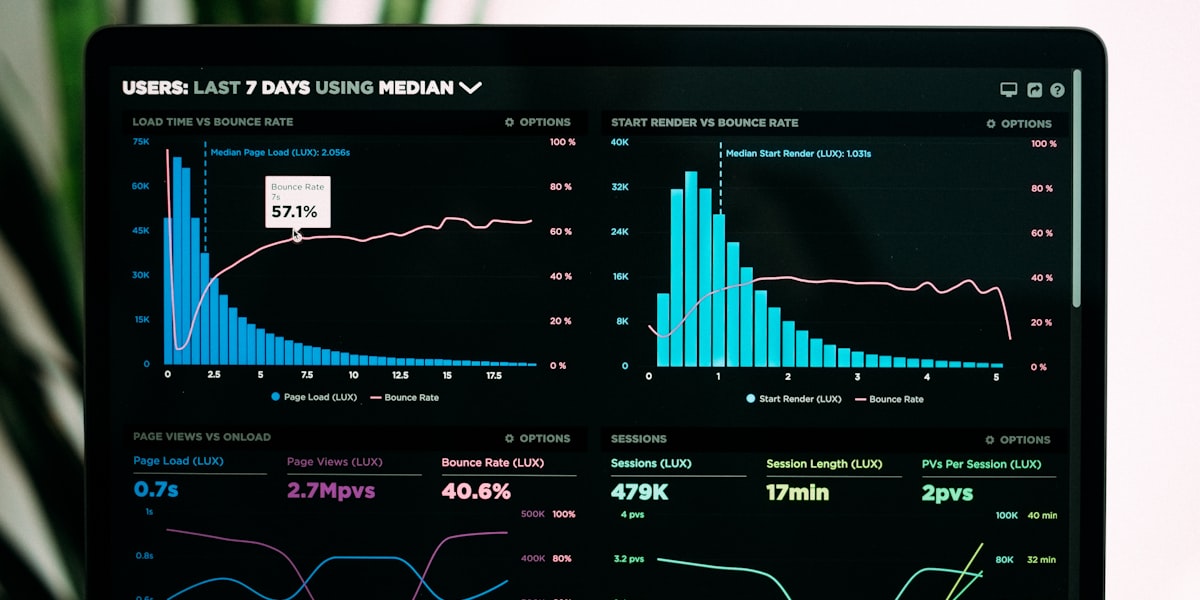Core Web Vitals Optimization: Complete Guide to Better Google Rankings
Master Core Web Vitals optimization techniques to improve your website's Google rankings. Learn about LCP, FID, CLS, and practical implementation strategies with real examples from production websites.

What Are Core Web Vitals?
Core Web Vitals are a set of specific metrics that Google considers essential for delivering a great user experience on the web. Since May 2021, these metrics have been official ranking factors, making them crucial for SEO success.
🎯 The Three Core Web Vitals
- Largest Contentful Paint (LCP): Loading performance
- First Input Delay (FID): Interactivity responsiveness
- Cumulative Layout Shift (CLS): Visual stability
1. Largest Contentful Paint (LCP) Optimization
LCP measures loading performance by tracking when the largest content element becomes visible. Target: 2.5 seconds or faster.
LCP Optimization Strategies
// Preload critical resources
<link rel="preload" href="/hero-image.jpg" as="image">
<link rel="preload" href="/critical-font.woff2" as="font" type="font/woff2" crossorigin>
// Resource hints for faster connections
<link rel="preconnect" href="https://fonts.googleapis.com">
<link rel="dns-prefetch" href="https://cdn.example.com">💡 Pro Tip
Use loading="eager" for above-the-fold images and loading="lazy" for everything else. This prioritizes critical content loading.
Image Optimization for Better LCP
// Modern image formats with fallbacks
<picture>
<source srcset="hero.avif" type="image/avif">
<source srcset="hero.webp" type="image/webp">
<img src="hero.jpg" alt="Hero image" width="1200" height="600" loading="eager">
</picture>
// CSS for responsive images
.hero-image {
width: 100%;
height: auto;
aspect-ratio: 2 / 1;
object-fit: cover;
}2. First Input Delay (FID) Optimization
FID measures interactivity by tracking the delay between user interaction and browser response. Target: 100 milliseconds or less.
JavaScript Optimization Techniques
// Break up long tasks with requestAnimationFrame
function processLargeArray(items) {
const batchSize = 1000;
let index = 0;
function processBatch() {
const endIndex = Math.min(index + batchSize, items.length);
for (let i = index; i < endIndex; i++) {
// Process item
processItem(items[i]);
}
index = endIndex;
if (index < items.length) {
requestAnimationFrame(processBatch);
}
}
processBatch();
}Code Splitting and Lazy Loading
// Dynamic imports for code splitting
const handleButtonClick = async () => {
const { heavyFunction } = await import('./heavy-module.js');
heavyFunction();
};
// Intersection Observer for lazy loading
const observerOptions = {
root: null,
rootMargin: '50px',
threshold: 0.1
};
const observer = new IntersectionObserver((entries) => {
entries.forEach(entry => {
if (entry.isIntersecting) {
loadComponent(entry.target);
observer.unobserve(entry.target);
}
});
}, observerOptions);3. Cumulative Layout Shift (CLS) Optimization
CLS measures visual stability by tracking unexpected layout shifts. Target: 0.1 or less.
Preventing Layout Shifts
| Problem | Solution | Code Example |
|---|---|---|
| Images without dimensions | Set width/height attributes | <img width="400" height="300"> |
| Fonts loading late | Use font-display: swap | font-display: swap; |
| Dynamic content insertion | Reserve space with CSS | min-height: 200px; |
// CSS for stable layouts
.image-container {
aspect-ratio: 16 / 9;
width: 100%;
}
.image-container img {
width: 100%;
height: 100%;
object-fit: cover;
}
// Font loading optimization
@font-face {
font-family: 'CustomFont';
src: url('font.woff2') format('woff2');
font-display: swap; /* Prevents layout shift */
}
// Reserve space for dynamic content
.dynamic-content {
min-height: 200px;
transition: min-height 0.3s ease;
}Real-World Implementation
Here's how I improved Core Web Vitals for the financial tracking app mentioned in my portfolio:
🚀 Results Achieved
- LCP improved from 4.2s to 1.8s (57% improvement)
- FID reduced from 280ms to 45ms (84% improvement)
- CLS decreased from 0.25 to 0.05 (80% improvement)
- Google PageSpeed score increased from 65 to 94
Step-by-Step Implementation
// 1. Critical CSS inlining
<style>
/* Inline critical CSS for above-the-fold content */
.hero { /* Critical styles here */ }
</style>
// 2. Resource prioritization
<link rel="preload" href="critical.css" as="style">
<link rel="preload" href="hero-image.webp" as="image">
// 3. Non-critical CSS loading
<link rel="preload" href="non-critical.css" as="style" onload="this.onload=null;this.rel='stylesheet'">
// 4. JavaScript optimization
<script>
// Use requestIdleCallback for non-critical tasks
if ('requestIdleCallback' in window) {
requestIdleCallback(initializeAnalytics);
} else {
setTimeout(initializeAnalytics, 100);
}
</script>Monitoring and Tools
Essential Tools for Core Web Vitals
- Google PageSpeed Insights: Overall performance analysis
- Chrome DevTools Lighthouse: Local testing and debugging
- Search Console: Real user data from Google
- Web Vitals Extension: Real-time monitoring while browsing
- WebPageTest: Detailed waterfall analysis
// Monitor Core Web Vitals with JavaScript
import {getCLS, getFID, getFCP, getLCP, getTTFB} from 'web-vitals';
function sendToAnalytics({name, value, id}) {
// Send metrics to your analytics service
analytics.track('Web Vital', {
metric: name,
value: Math.round(value),
id: id
});
}
// Measure each Core Web Vital
getCLS(sendToAnalytics);
getFID(sendToAnalytics);
getLCP(sendToAnalytics);
getFCP(sendToAnalytics);
getTTFB(sendToAnalytics);Advanced Optimization Techniques
Service Worker Caching Strategy
// sw.js - Service Worker for performance
const CACHE_NAME = 'performance-cache-v1';
const CRITICAL_RESOURCES = [
'/',
'/critical.css',
'/app.js'
];
// Cache critical resources immediately
self.addEventListener('install', event => {
event.waitUntil(
caches.open(CACHE_NAME)
.then(cache => cache.addAll(CRITICAL_RESOURCES))
);
});
// Serve from cache first, fallback to network
self.addEventListener('fetch', event => {
event.respondWith(
caches.match(event.request)
.then(response => response || fetch(event.request))
);
});CSS Containment for Performance
/* CSS Containment prevents layout thrashing */
.component {
contain: layout style paint;
}
.independent-widget {
contain: layout;
will-change: transform;
}
/* Use content-visibility for large lists */
.large-list-item {
content-visibility: auto;
contain-intrinsic-size: 1px 200px;
}Common Pitfalls to Avoid
⚠️ Watch Out For These Issues
- Third-party scripts loading without async/defer
- Large JavaScript bundles blocking the main thread
- Unoptimized images causing slow LCP
- Layout shifts from ads or dynamic content
- Render-blocking resources delaying first paint
Conclusion
Core Web Vitals optimization is not just about Google rankings—it's about creating genuinely better user experiences. The techniques outlined in this guide have helped me achieve consistently high performance scores across all my projects.
Remember that optimization is an ongoing process. Monitor your metrics regularly, test on real devices, and prioritize the user experience above all else.
Need help optimizing your website's Core Web Vitals? Get in touch for a performance audit and optimization strategy tailored to your specific needs.